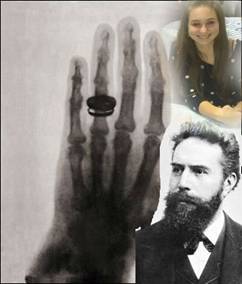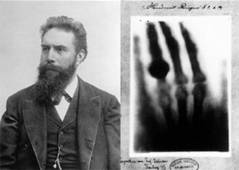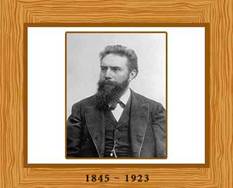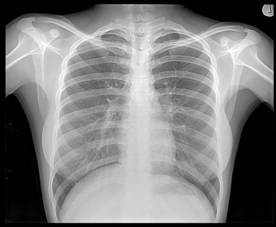
Home | About Us | JCPS Home | EHS Science Video
- Chemistry Topics: 1) Matter and Measurement, 2) Atoms, Molecules, and Ions, 3) Stoichiometry, 4) Aqueous Solutions, 5) Thermochemistry, 6) Periodic Properties, 7) Solids, Liquids, and Gases, 8) Chemical Bonding, 9) Molecular Geometry, 10) Properties of Solutions, 11) Chemical Kinetics, 12) Chemical Equilibrium, 13) Acid-Base Chemistry, 14) Thermodynamics, 15) Electrochemistry, 16) Nuclear Chemistry
 Wilhelm Röntgen
Wilhelm Röntgen
By: Morgan Zachary
Birth date: March 27, 1845
Birthplace: Lennep in the Lower Rhine Province of Germany
Death date: February 10, 1923
Death place: Munich
 Early Influences: Röntgen was brought up in Netherlands after he and his family moved to Apeldoorn in 1848. Here he first received his early education at the Institute of Martinus Herman van Doorn, a boarding school and in 1861 attended the Utrecht Technical School.
Early Influences: Röntgen was brought up in Netherlands after he and his family moved to Apeldoorn in 1848. Here he first received his early education at the Institute of Martinus Herman van Doorn, a boarding school and in 1861 attended the Utrecht Technical School.
 Education: He then entered the University of Utrecht in 1865 to study physics without having the necessary credentials required for a regular student.
Education: He then entered the University of Utrecht in 1865 to study physics without having the necessary credentials required for a regular student.
 Major Accomplishments: Wilhelm invented the first X-rays. This has helped doctors better diagnose injuries or any kind of problem with the patient.
Major Accomplishments: Wilhelm invented the first X-rays. This has helped doctors better diagnose injuries or any kind of problem with the patient.
Contemporaries: Hospitals and immediate care centers are now using x-rays to help diagnose broken bones or any type of bone problem. Also dentists use X-rays to help identify possible cavities in teeth. Most go to the dentist and get an X-ray at least once a year.
How it impacts me: Whenever I have a broken bone or something else wrong with me, the x-ray can help diagnose my problem. Without the invention of the x-ray it would be much tougher to diagnose problems. What nurses usually do during this process is help the patient prep for the x-ray and leave so they would not be exposed to the electromagnetic waves that x-rays give off.
Glasser, Otto, Jessie C. Tucker, and Margret Boveri. Wilhelm Conrad Röntgen and the early history of the Roentgen rays,. Springfield, Ill.: C.C. Thomas, 1934. Print.